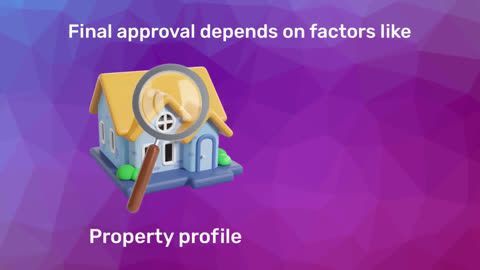What is a virtual digital asset?
As per Section 194S of the Income Tax Act, a Virtual Digital Asset (VDA) includes:
Cryptocurrencies: These are digital tokens, codes, numbers, or information generated through cryptographic means or any other method.
Non-Fungible Tokens (NFTs): A type of digital token that is unique and cannot be exchanged on a one-to-one basis like regular cryptocurrencies.
Other notified assets: Any other digital asset that may be notified by the central government through an official gazette notification.
These definitions ensure that all relevant types of virtual digital assets are covered under taxation, making it necessary for individuals transacting in these assets to follow appropriate tax rules.
To ensure compliance with Section 194S, taxpayers should adopt the following best practices:
- Timely TDS deduction: Always deduct TDS at the time of making payments for virtual asset transfers. Ensure that the deduction is done accurately to avoid penalties and interest on unpaid amounts.
- Maintain accurate records: Keep detailed records of all cryptocurrency transactions, including purchase and sale invoices, payment confirmations, and TDS deduction details. This practice will simplify compliance and ensure accurate reporting during tax filing.
- Consult a tax professional: Engaging with a qualified tax consultant or chartered accountant can provide valuable insights and assistance in navigating the complexities of Section 194S. They can help ensure compliance and provide guidance on tax planning strategies.
- Regular monitoring: Regularly review your financial transactions and tax obligations to identify any potential issues early on. This proactive approach can help mitigate risks associated with tax compliance.
Consequences of non-compliance with Section 194S
Failing to adhere to the provisions of Section 194S can lead to several adverse consequences:
- Penalties and interest: Taxpayers who do not comply with Section 194S may face penalties and interest on the unpaid TDS amounts. This can significantly increase the overall tax liability and create financial strain.
- Legal repercussions: Non-compliance can lead to legal actions from tax authorities, including audits and investigations, which can further complicate a taxpayer's financial standing and credibility.
- Impact on future transactions: A history of non-compliance can adversely affect future transactions, as financial institutions and partners may scrutinize a taxpayer’s compliance history more rigorously, complicating business relationships.
What is the amount of exemption available under Section 54B?
Exemption under Section 54B is the lowest of the following:
Here’s a simple example:
Particulars
|
Amount (Rs.)
|
Sale price of land
|
60,00,000
|
Less: Indexed cost of purchase (30,00,000 × 348/264)
|
39,54,545
|
Long-term capital gains
|
20,45,455
|
Cost of new agricultural land
|
45,00,000
|
Exemption allowed (lower of the two)
|
20,45,455
|
In this case, Rs. 20,45,455 is exempt from tax under Section 54B, as it is the lower of the capital gains and the amount spent on the new land.
Best practices to avoid pitfalls under Section 194S
To minimize the risks associated with Section 194S, taxpayers should consider the following best practices:
- Stay informed: Keep updated with the latest developments regarding cryptocurrency regulations and tax implications. This proactive approach can help you adapt to changes in the regulatory landscape effectively.
- Invest wisely: When engaging in cryptocurrency investments, consider the potential tax implications and plan your transactions accordingly. Avoid impulsive decisions that may lead to unfavourable tax outcomes.
- Plan for tax liabilities: Incorporate tax liabilities into your financial planning. Setting aside funds for potential TDS obligations can help you avoid financial stress during tax season.
Smart financial planning also includes considering long-term investments like property ownership. With a home loan from Bajaj Finserv, you can turn your property dreams into reality while maintaining financial stability. Check your eligibility for home loans up to Rs. 15 Crore* with attractive EMIs starting at just Rs. 684/lakh*. You may already be eligible, find out by entering your mobile number and OTP.
How is exemption calculated in case of sale of agricultural land?
If you're claiming exemption under Section 54B, the new agricultural land purchased must not be sold within three years. Here's how different situations impact your exemption:
Scenario 1
You sell the new land within 3 years and its cost is less than the capital gains:
Result: The exemption is cancelled. The full amount received from the sale becomes taxable as capital gains. The cost of acquisition is considered to be NIL.
Scenario 2
You sell the new land within 3 years and its cost is more than the capital gains:
Result: The exemption is revoked. However, the cost of acquisition is reduced by the amount of exemption you had claimed earlier. This adjusted amount can be deducted while calculating your capital gains.
Scenario 3
You sell the new land after 3 years from the date of purchase:
Result: The exemption under Section 54B remains valid. You can also claim indexation benefit on the cost when calculating long-term capital gains from the sale.
Following these rules ensures that the exemption remains valid and you avoid unnecessary tax complications.
What happens to exemptions when agricultural land is sold?
When agricultural land is sold, any capital gains made from the sale are typically subject to taxation under the Income Tax Act, unless specific exemptions apply. The gains are calculated by subtracting the indexed cost of acquisition and selling expenses from the total sale consideration.
Section 54B allows taxpayers—both individuals and Hindu Undivided Families (HUFs)—to reduce or defer their capital gains tax liability if they reinvest the proceeds into purchasing another agricultural land.
To benefit from this exemption:
The original land must have been used for agricultural purposes for at least two years before the sale.
The new agricultural land must be purchased within two years from the sale date.
Both the old and new properties must qualify as agricultural land under Income Tax Act provisions.
If the proceeds are not fully reinvested by the ITR filing deadline, the unused portion should be deposited into a Capital Gains Account Scheme (CGAS) to still be eligible for the exemption. However, if the amount in CGAS is not utilised within three years, it becomes taxable in the year it lapses.
By following the right process and timelines, sellers of agricultural land can save significantly on capital gains tax while ensuring compliance with tax laws.
What is the Capital Gains Account Scheme (CGAS)?
The Capital Gains Account Scheme (CGAS) is useful if you’re unable to reinvest the capital gains before the ITR filing deadline. You can deposit the unutilised amount into a CGAS account with an authorised bank to preserve your exemption under Section 54B.
This ensures the tax benefit isn’t lost due to timing issues. However, if you fail to utilise this amount for buying new agricultural land within three years, the deposited amount becomes taxable as capital gains in the year the deadline expires. The tax will then apply based on your applicable income tax slab.
How to disclose agricultural land sale in ITR?
Sale of rural agricultural land
Rural agricultural land is not treated as a capital asset under the Income Tax Act. Therefore, any profits from its sale are not taxable. Such income is exempt under Section 10(1) and must be reported in Schedule EI of your ITR.
Sale of urban agricultural land
Urban agricultural land is a capital asset. Hence, its sale is taxable under capital gains. You must report it in Schedule CG of the ITR. While calculating gains, you can subtract the indexed cost of acquisition and improvement. Additionally, exemptions under Sections 54B, 54EC, or 54F may apply, depending on how you reinvest the capital gains.
TDS applicable on the sale of agricultural land
TDS at 1% under Section 194IA applies to property sales over Rs. 50 lakh. However, this rule does not apply to agricultural land—whether rural or urban—regardless of the transaction value.
Still, if you want to claim exemption under Section 54B, you must reinvest the sale proceeds in new agricultural land. If immediate reinvestment isn't possible, deposit the amount into a CGAS account before the ITR filing deadline to preserve your exemption eligibility.
Understanding this can help you avoid confusion and unnecessary deductions. When in doubt, consult a Chartered Accountant to ensure correct tax treatment for your agricultural property transactions.
Who is responsible for deducting TDS under Section 194S?
The responsibility to deduct TDS under Section 194S depends on the nature of the transaction and the involvement of intermediaries such as exchanges and brokers. Here's how the liability is determined in different scenarios:
1. Peer-to-peer (P2P) transfer of VDA
2. Transfer of VDA via an exchange (Exchange does not own the VDA)
Case 1: Payment made to the exchange directly or through a broker
The exchange is responsible for deducting TDS.
Only the exchange can deduct the tax.
The exchange must file Form 26Q.
Case 2: Payment between the seller and the exchange is routed through a broker
Both the exchange and broker are jointly responsible.
If a written agreement exists, only the broker may deduct the tax.
The broker must file Form 26Q and the exchange must file Form 26QF.
3. Transfer of VDA via an exchange (Exchange owns the VDA)
Case 1: Buyer pays the exchange through a broker
The broker is responsible for TDS.
If there is a written agreement, the exchange may deduct tax.
The exchange must file Form 26QF and include it in their ITR.
Case 2: Buyer pays the exchange directly
The buyer is responsible for TDS.
The exchange may deduct tax based on written agreement.
The exchange must file Form 26QF and report it in their ITR.
4. Transfer of VDA in kind (Non-Cash Consideration)
Case 1: Transaction not through an exchange
The buyer must deduct TDS.
TDS must be paid before transferring the VDA.
Buyer files Form 26Q and Form 26QE.
Case 2: Transaction through an exchange
The exchange is responsible for TDS.
The exchange may deduct tax under a valid contract.
The exchange files Form 26Q.
Conclusion
Section 194S of the Income Tax Act plays a crucial role in shaping the landscape of cryptocurrency taxation in India. By understanding its implications and adopting best practices, taxpayers can navigate its complexities effectively. Compliance with this provision is essential for maintaining financial stability and credibility in an increasingly digital economy.
While managing your crypto investments and tax obligations, consider diversifying your portfolio with real estate investments. Bajaj Finserv provides seamless financing solutions with approval in just 48 hours* and no foreclosure charges for individual borrowers. Check your home loan eligibility and explore flexible repayment options tailored to your needs. You may already be eligible, find out by entering your mobile number and OTP.
Popular calculators for your financial calculations




